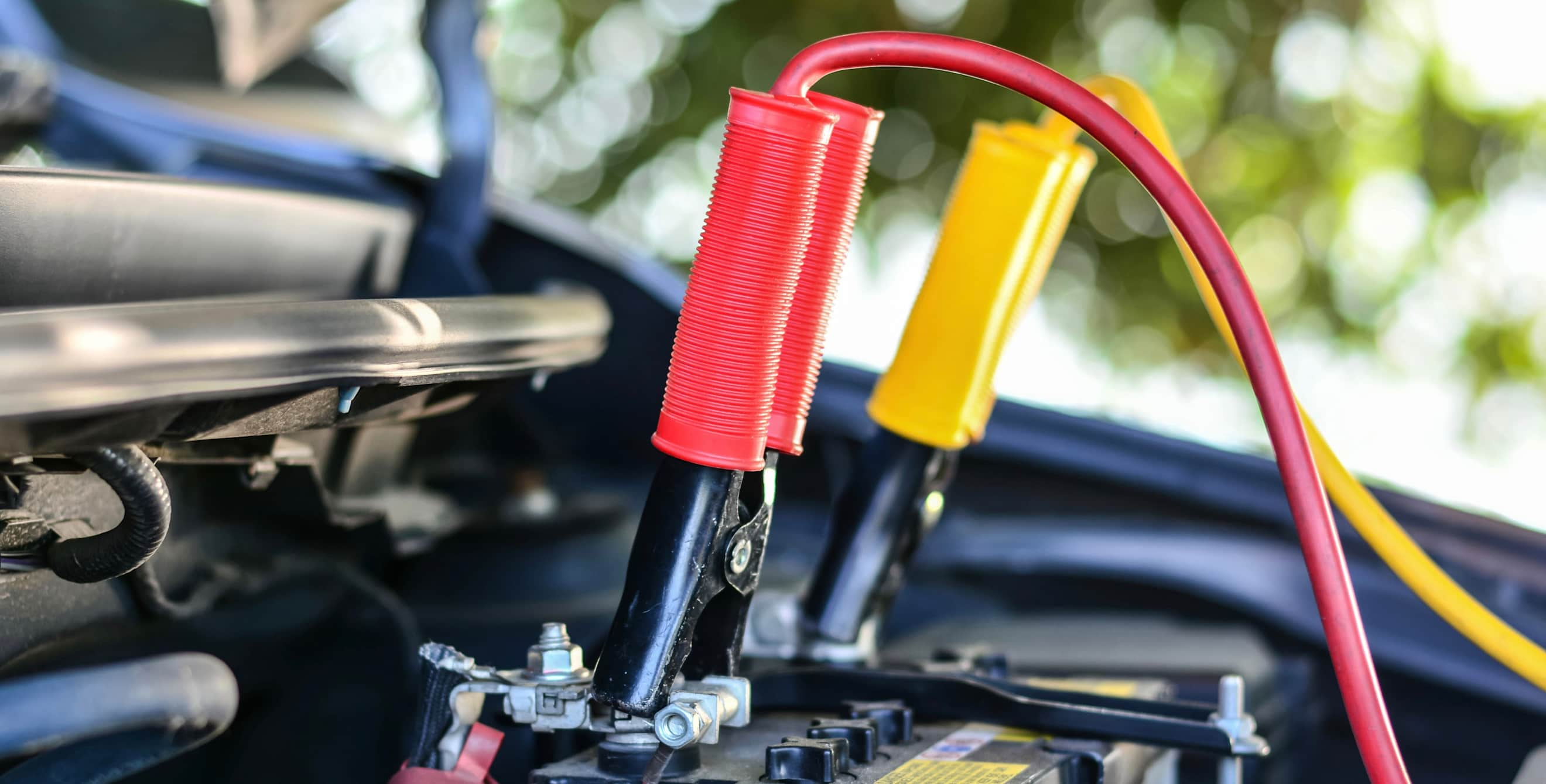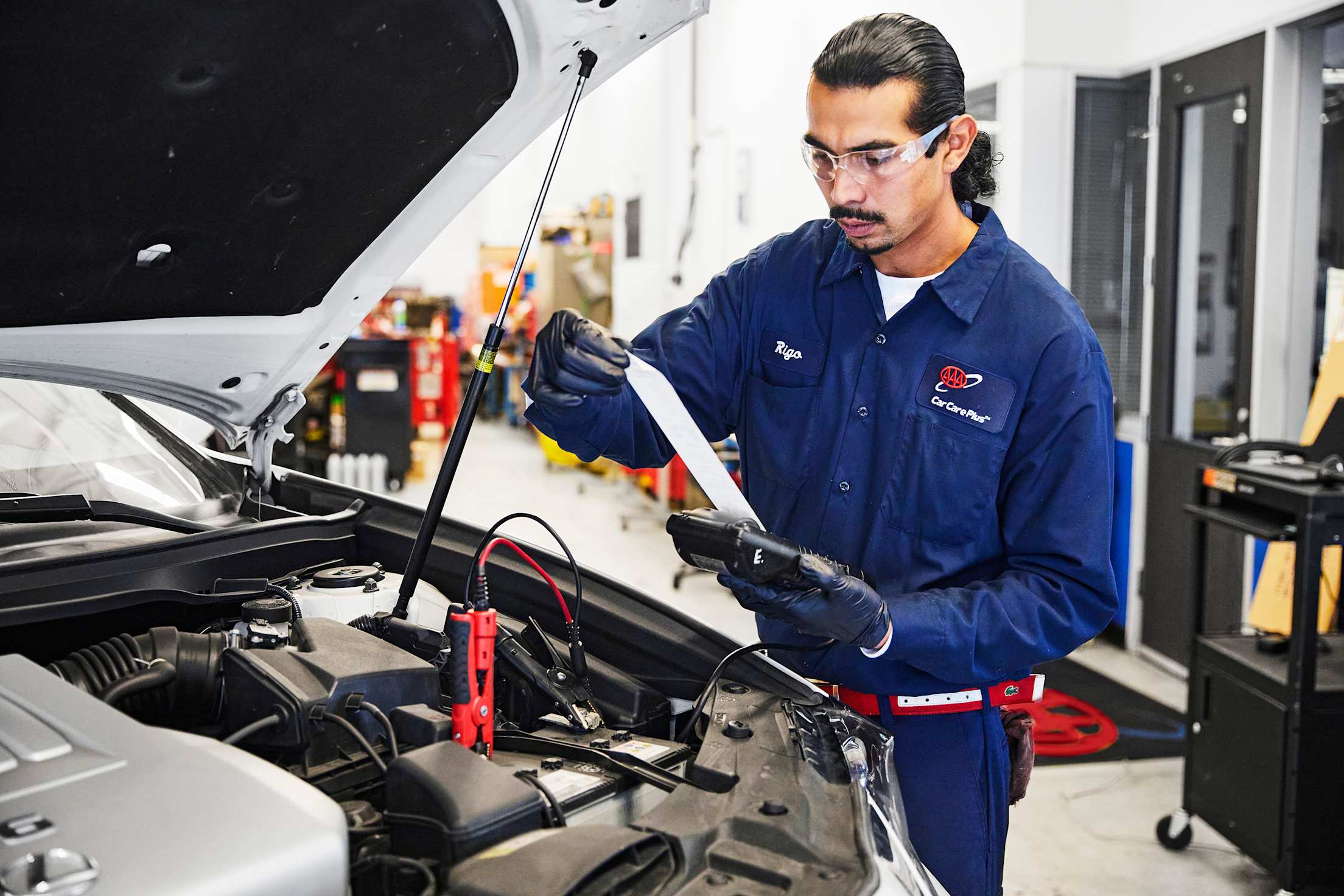
How to Safely Jumpstart a Car
Plus how to maintain the health of your car battery so you don't need the jumper cables.

Today's batteries can last for years with very little maintenance. But age, damage, or inadequate charging can make even the best battery too weak to start your car. Some simple preventive measures will go a long way toward keeping a battery healthy. And when it falters, a jump-start is sometimes all you need to be on your way.
Safety
The main safety concerns with batteries are the possibilities of severe shock and of explosion, with a consequent spray of sulfuric acid and battery shards.
A battery creates hydrogen gas, which is explosive and can be ignited by a spark. Even if it's too weak to start your car, a battery still may be able to give you a considerable shock. So don't smoke or wear metal jewelry near it. Do wear eye protection—safety glasses or goggles.

A mechanic can run a diagnostic test on your battery to check its health.
Jump-Starting
If the battery is sound but too weak to start your car, the alternator will probably be able to recharge it as you drive. The trick is to get the car going, and jump-starting will often do the job. But before you get out the cables, check your vehicle's owner's manual. Some carmakers advise against jump-starting to protect the car's electronics from a power surge.
In addition, some batteries have a "state of charge" indicator. A fully charged battery has a colored indicator, usually green or red. Black or clear means the battery is completely discharged and you should not try to recharge or jump-start it. Also, never try a jump-start if the battery's frozen.
You jump-start a car by attaching the weak battery to a similar but strong battery with cables specially made for the job. It's important to follow the exact order of procedure to do this safely:
- Locate the battery. It has two terminals, each marked with a symbol: - for the negative and + for the positive. In some cars, the battery is difficult to reach, so there is often a more accessible remote positive terminal in the engine compartment.
- The good battery must be similar to the one in the car that won't start. Most gasoline-powered cars have 12-volt systems; older cars may have six-volt systems. Park the car with the good battery close enough for the cables to reach the car needing a start, but not so close that they touch.
- Turn off the ignition and all accessories on both cars; set parking brakes; put transmissions in park (automatic) or neutral (manual).
- Attach one of the red clamps to the positive (+) terminal on the dead battery.
- Connect the other red clamp to the positive terminal on the working vehicle's battery.
- Attach a black clamp to the negative (-) terminal on the working vehicle's battery.
- Attach the final black clamp to a bare metal part of the dead vehicle.
- Start the engine of the car with the good battery and let it idle.
- Start the car with the bad battery.
- After you get the jumped car going, disconnect the negative cable from its ground connection, then from the terminal on the good battery. Next, disconnect the positive cable from both batteries. If the charging system warning lamp stays lit and the engine dies, another jump-start won't help. If the light goes out, there's a good chance the battery will recharge as you drive.
If your battery fails, AAA Battery Service can bring a replacement to you, install it, provide a warranty, and dispose of the old battery—all at member prices (cost varies by make of vehicle). Battery Service also can help you determine whether you actually need a replacement by diagnosing the condition of your current battery.
Maintenance
Keep the cable connections clean and tight. If the battery has caps that let you check the water level, keep it up to the full-mark (usually just under an inch from the top of the cell). The battery should be tightly clamped so it can't slide.
Test your vehicle's power supply and replace the battery on the spot.